AWS EKS
EKS Storage
EKS EBSElastic Block Store
Durable block storage for Kubernetes on AWS
In this guide, we'll explore how to attach AWS Elastic Block Store (EBS) volumes to Amazon EKS clusters. Topics include ephemeral vs durable storage, EBS CSI driver installation, StorageClasses, and a StatefulSet practical example.
Ephemeral vs Durable Storage
Kubernetes supports different storage options:
emptyDir: creates a temporary directory on the node’s root disk. Data is lost when the Pod terminates.PersistentVolume: backed by durable storage outside the Pod lifecycle.
With a StatefulSet, each Replica can mount its own PersistentVolumeClaim (PVC). On Pod replacement, Kubernetes reattaches the same volume, preserving data.

Block Storage vs. File Storage
Block storage (EBS) provides raw device access, similar to adding a virtual hard drive. You format and manage the filesystem yourself.
File storage (EFS, NFS) offers a network filesystem; you simply read and write files over the network.
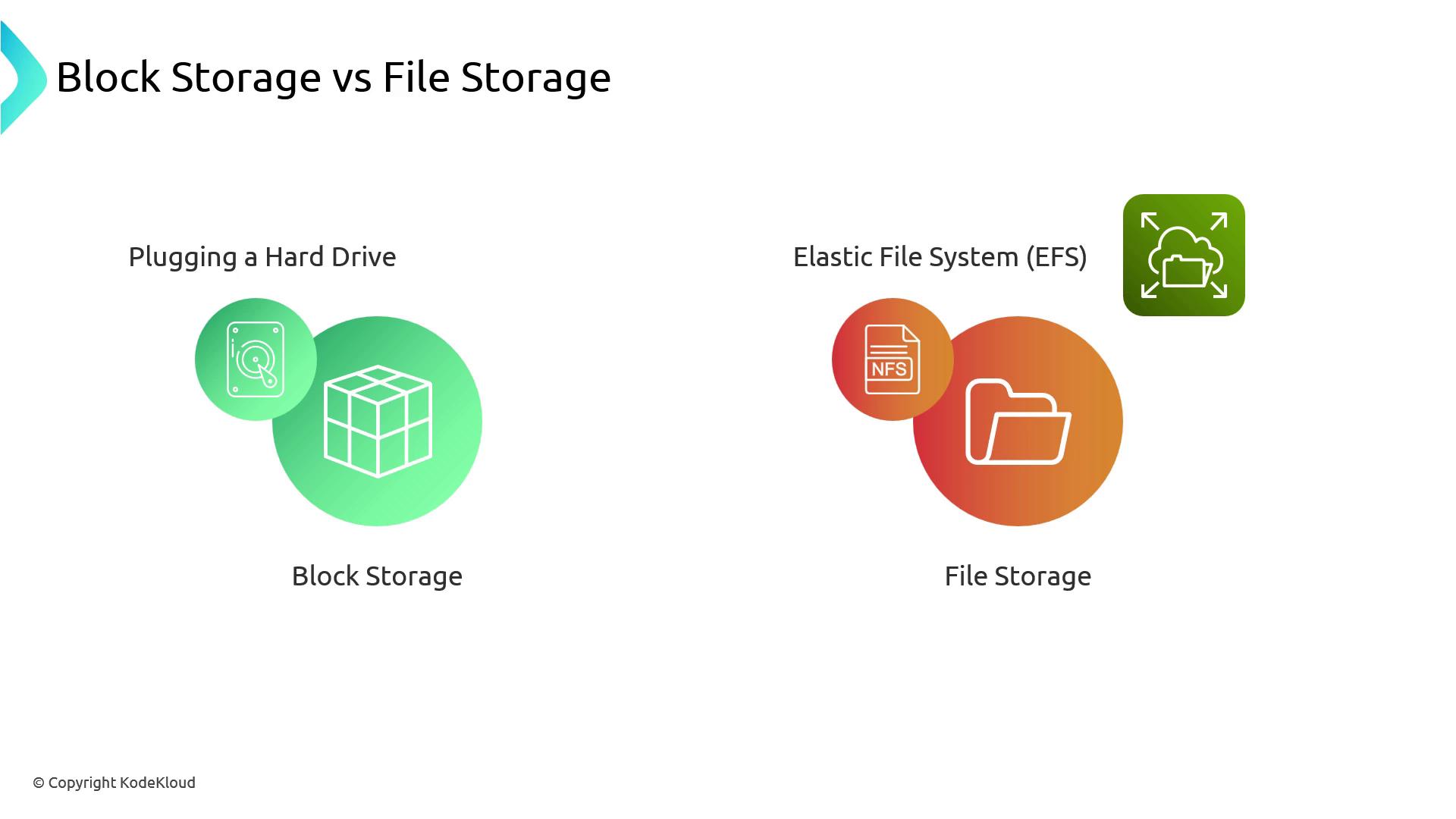
| Storage Type | AWS Service | Use Case | Characteristics |
|---|---|---|---|
| Block Storage | EBS | Databases, stateful apps | Low-latency, formatable, AZ-bound |
| File Storage | EFS, NFS | Shared file access | POSIX-compliant, multi-AZ, scalable |
Root Drive and Local Storage
Every EKS node boots from an EBS root volume. While this acts like local storage, it still operates within a single Availability Zone (AZ).
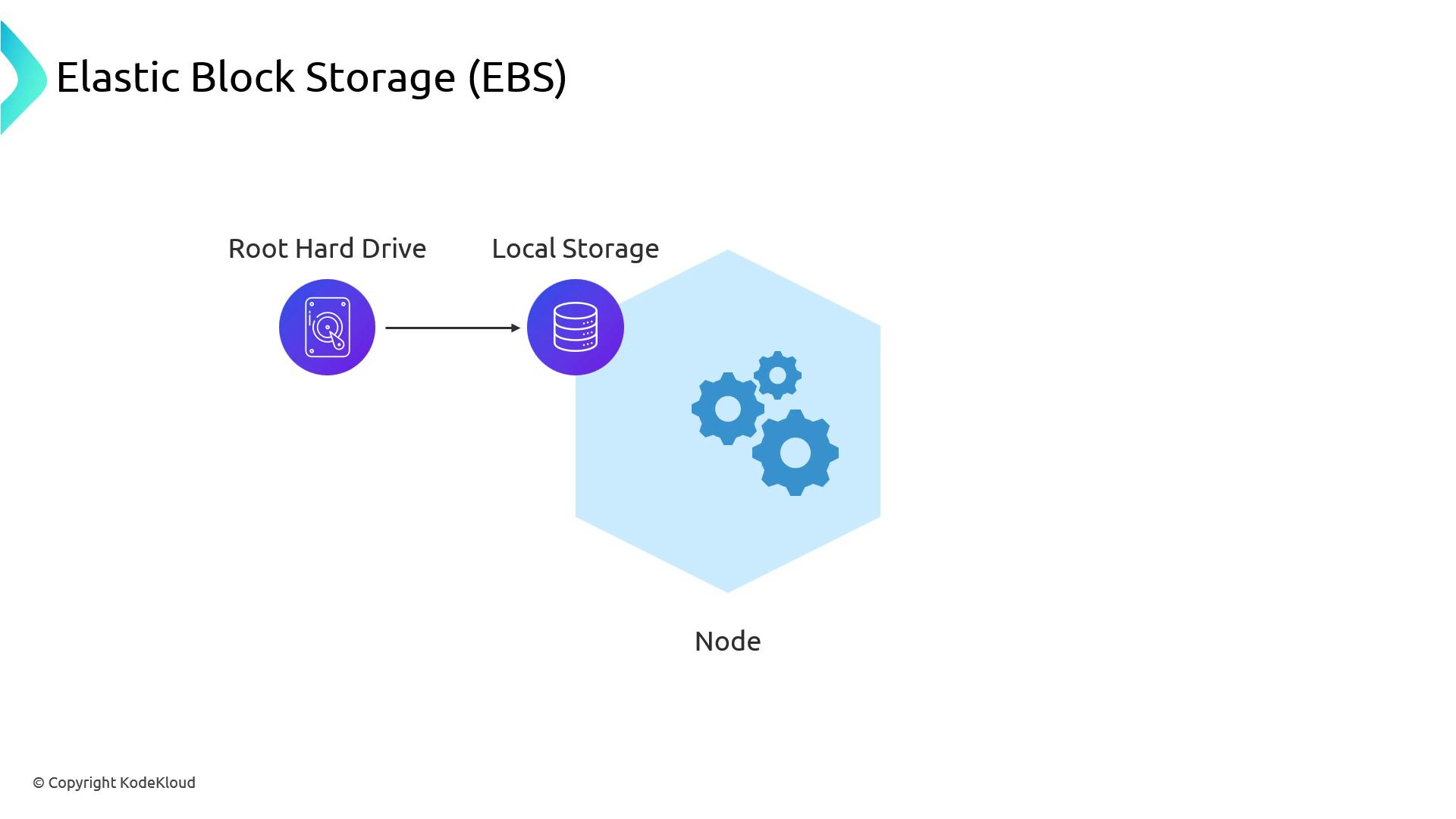
Availability Zone Constraints
EBS volumes are AZ-specific. If a node mounts an EBS volume in AZ us-east-1a and terminates, a replacement node in AZ us-east-1b cannot attach that volume.

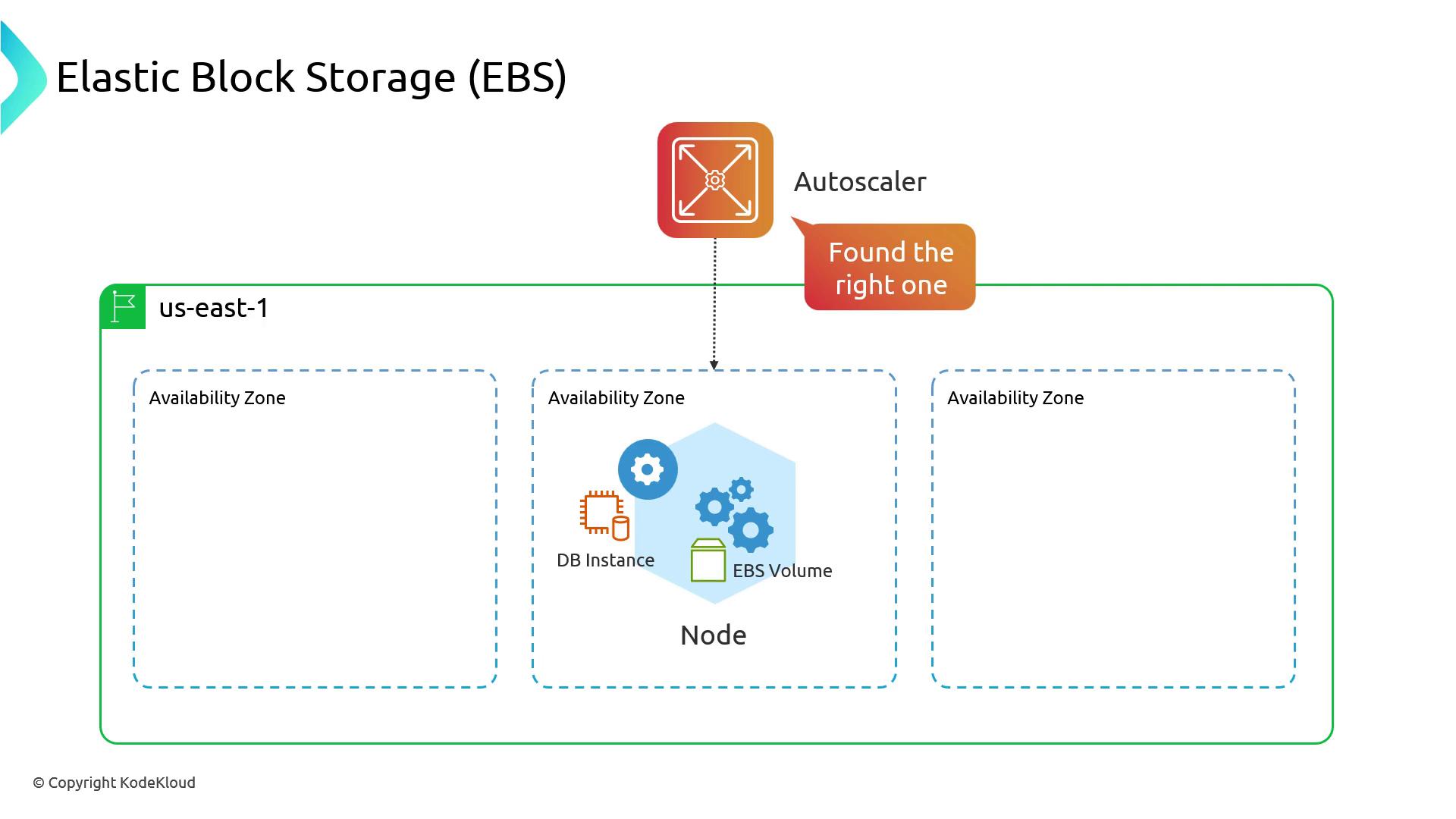
Warning
Pod scheduling may fail if the EBS volume cannot attach in a different AZ. Use proper volumeBindingMode or restrict node scheduling to the same AZ.
EBS Volume Types and Performance
| Volume Type | Description | Use Case |
|---|---|---|
| gp2 | General Purpose SSD | Cost-effective, standard workloads |
| gp3 | Next-gen General Purpose SSD | Lower cost per GB, higher throughput |
| io1/io2 | Provisioned IOPS SSD | Latency-sensitive, high-IOPS databases |
EBS provides low-latency block storage within an AZ and scales up to multiple terabytes.

Faster Local Storage
Instance store volumes (NVMe) offer the lowest latency but are ephemeral—data is lost on instance termination.
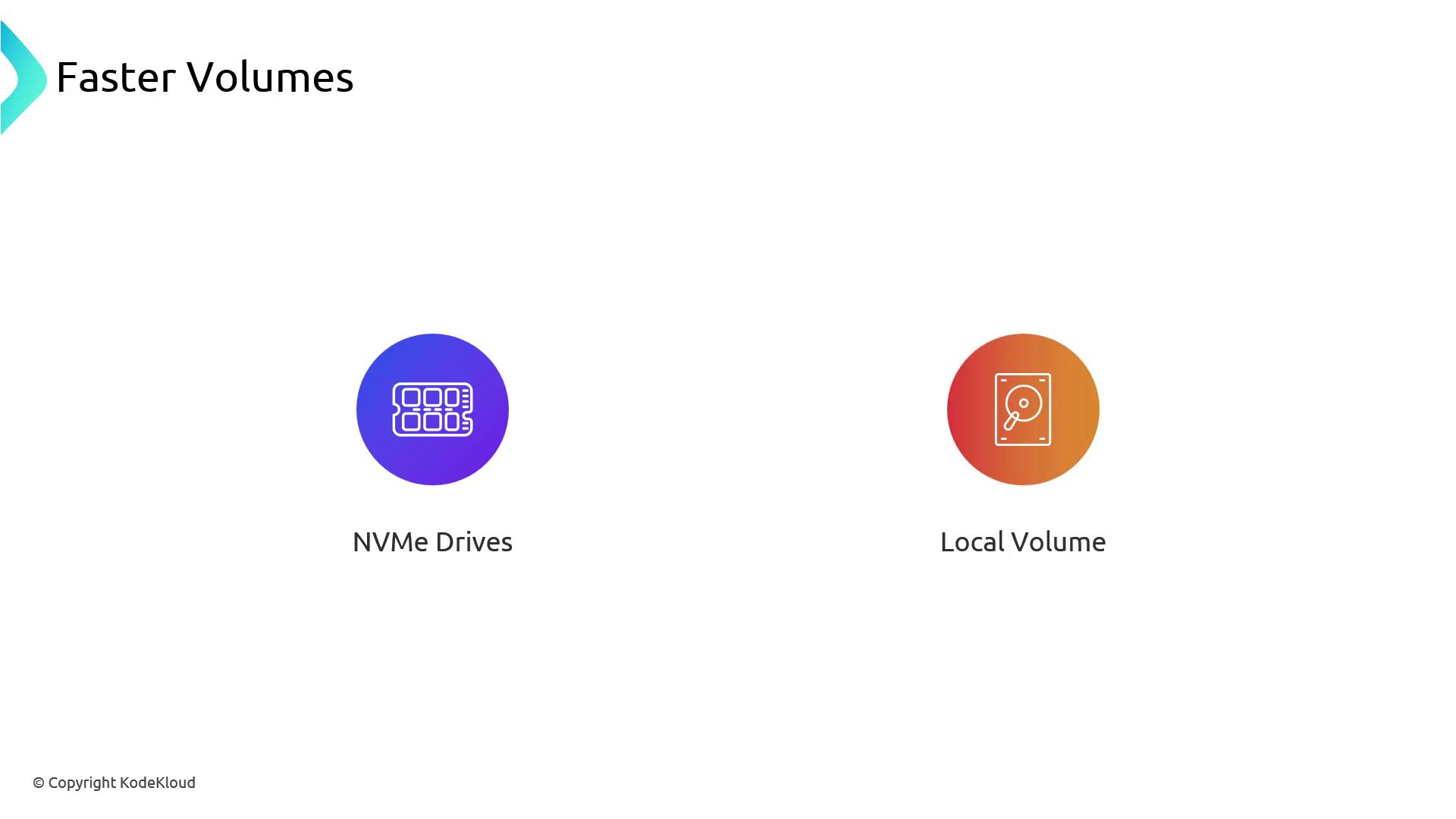
Snapshots and Data Protection
EBS supports incremental snapshots to Amazon S3, enabling point-in-time backups and restores. This integration is ideal for disaster recovery and compliance.
AWS EBS CSI Driver
Amazon EKS employs the Container Storage Interface (CSI) to provision EBS volumes. Installing the AWS EBS CSI driver deploys:
- Controller (Deployment): Manages lifecycle operations (Create/Delete) via AWS APIs
- Node DaemonSet: Handles volume attachments and mounts on each node

The driver includes predefined StorageClasses for different volume types and binding modes:
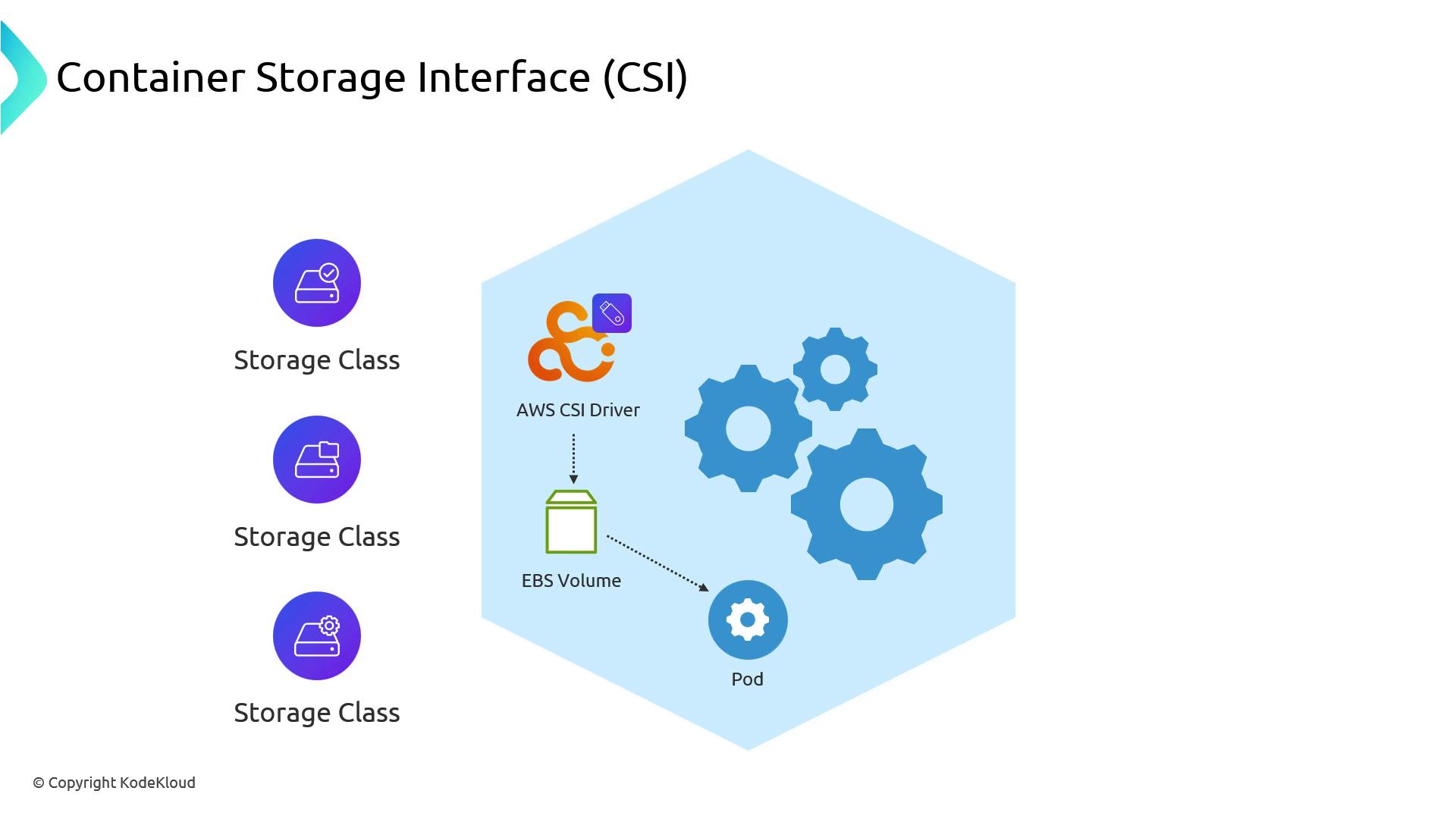
Verifying the CSI Driver
Check the kube-system namespace to ensure the EBS CSI controller and node plugins are running:
kubectl get pods -n kube-system
NAME READY STATUS RESTARTS AGE
aws-node-xxxxx 2/2 Running 0 90m
coredns-xxxxx 1/1 Running 0 100m
ebs-csi-controller-xxx 5/5 Running 0 45m
ebs-csi-node-xxx 3/3 Running 0 45m
Inspect the controller Pod for environment settings like AWS_STS_REGIONAL_ENDPOINTS=regional:
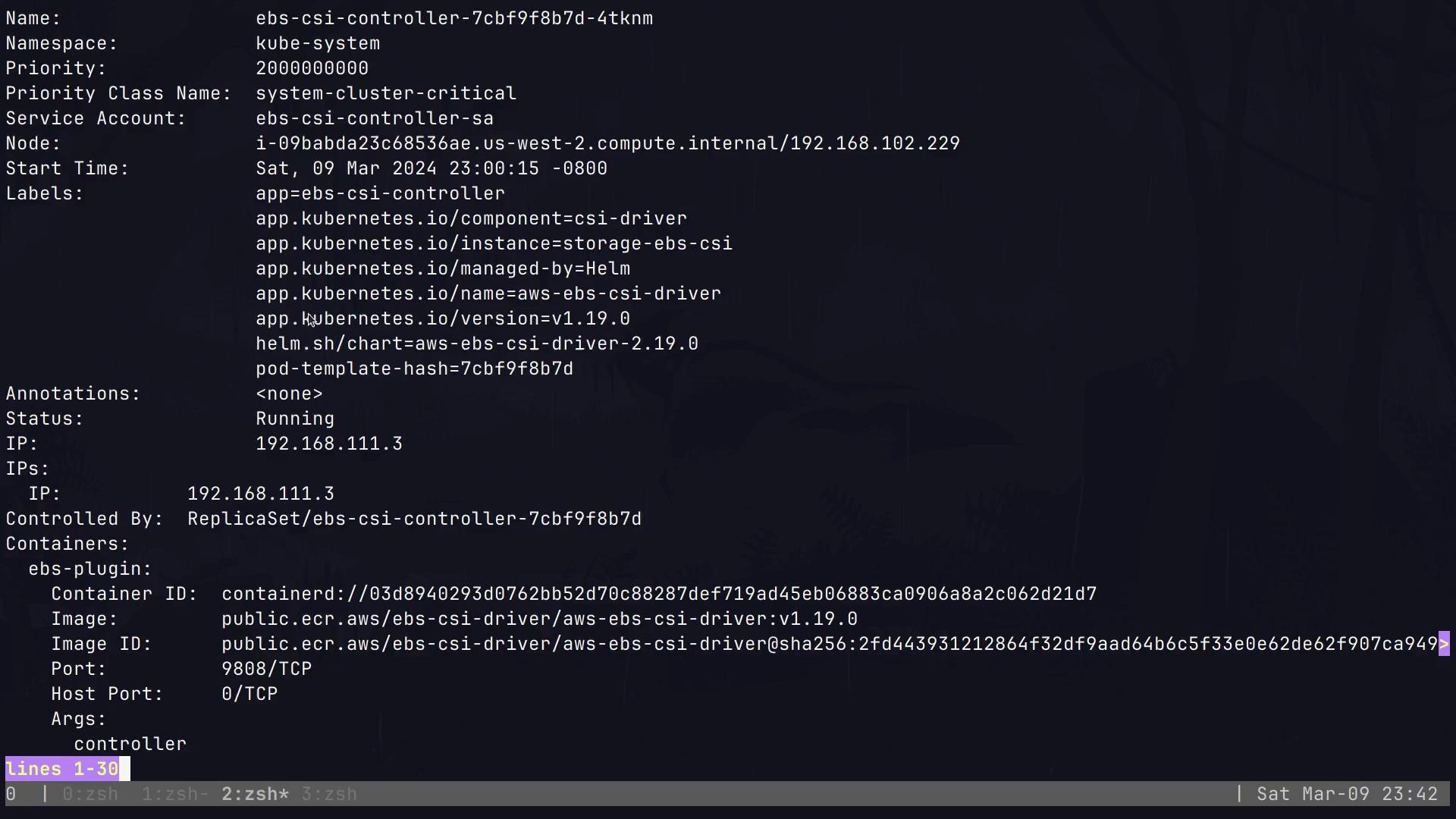
Default StorageClasses
After installation, list the StorageClasses:
kubectl get storageclasses
NAME PROVISIONER RECLAIMPOLICY VOLUMEBINDINGMODE ALLOWVOLUMEEXPANSION AGE
gp2 kubernetes.io/aws-ebs Delete WaitForFirstConsumer false 100m
gp3 (default) ebs.csi.aws.com Delete WaitForFirstConsumer true 45m
gp3-encrypted ebs.csi.aws.com Delete WaitForFirstConsumer true 45m
Note
WaitForFirstConsumer delays volume provisioning until a Pod is scheduled, ensuring the volume is created in the correct AZ.
At this point, no PersistentVolumes exist until PVCs are requested:
kubectl get persistentvolumes --all-namespaces
No resources found
StatefulSet Example
Deploy a StatefulSet that requests a 16 Gi EBS volume via the gp2 StorageClass:
apiVersion: apps/v1
kind: StatefulSet
metadata:
name: alpine
spec:
selector:
matchLabels:
app: alpine
serviceName: alpine
replicas: 1
template:
metadata:
labels:
app: alpine
spec:
containers:
- name: alpine
image: public.ecr.aws/docker/library/alpine:latest
command: ["sh", "-c", "sleep 1d"]
volumeMounts:
- name: data
mountPath: /data
volumeClaimTemplates:
- metadata:
name: data
spec:
storageClassName: gp2
accessModes: ["ReadWriteOnce"]
resources:
requests:
storage: 16Gi
Apply and verify the PVC:
kubectl apply -f alpine-statefulset.yaml
kubectl get pvc
NAME STATUS VOLUME CAPACITY ACCESS MODES STORAGECLASS AGE
data-alpine-0 Bound pvc-7f223e3d-ee49-41ba-d46a-764ab5c14bdb 16Gi RWO gp2 30s
Verifying the Mounted Volume
Connect to the Alpine Pod and confirm the /data mount:
kubectl get pods
kubectl exec -it alpine-0 -- /bin/sh
df -h /data
Filesystem Size Used Avail Use% Mounted on
/dev/nvme1n1 15.9Gi 24K 15.9Gi 0% /data
Persistence Across Pod Restarts
Create a test file, delete the Pod, and ensure data persists:
# Inside the container
touch /data/hello
ls /data
# On the host
kubectl delete pod alpine-0
kubectl exec -it alpine-0 -- /bin/sh -c "ls /data"
hello lost+found
Conclusion
By leveraging AWS EBS with the Kubernetes CSI driver, you gain reliable, low-latency, AZ-aware block storage for stateful applications on EKS. Understanding volume types, AZ constraints, and StorageClass configurations ensures robust data persistence for databases, message queues, and other critical workloads.
Links and References
Watch Video
Watch video content
Practice Lab
Practice lab